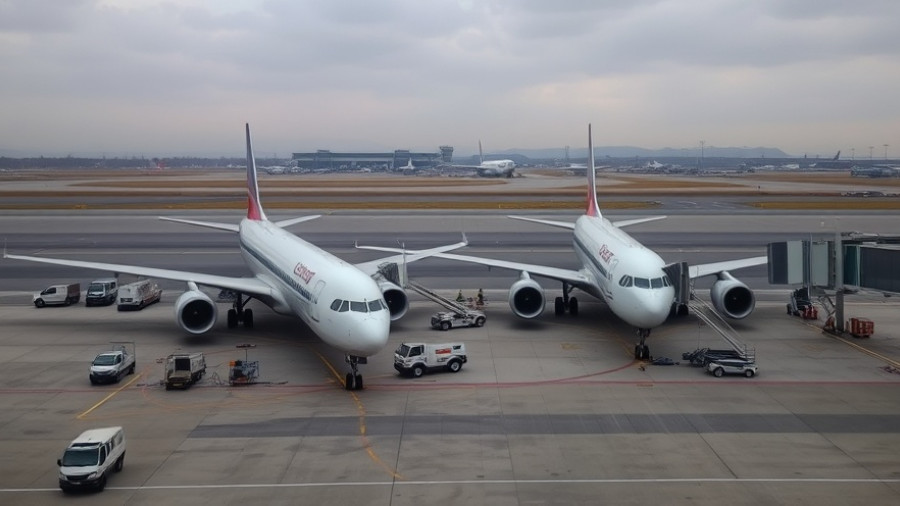
The Ground Collision That Shook Seattle's Skies
On the morning of February 5, 2025, a dangerous ground collision at Seattle-Tacoma International Airport raised alarm over aviation safety measures. With light snow creating slippery conditions, Delta Airlines Flight 1921, a Boeing 737, was waiting at a de-icing point when it was struck by the wing of a taxiing Japan Airlines Flight 68, a Boeing 787. Although there were no injuries reported, the incident has ignited discussions about safety protocols on airport grounds.
Context: Understanding Ground Operations at Busy Airports
The congested scenes at airports can become a significant source of risk, especially in challenging weather conditions. As Delta Flight 1921 prepared for de-icing, it was instructed to hold short of various spots, anxiously awaiting clearance. Without the presence of ground marshals or wing walkers—critical personnel for safely maneuvering aircraft—the stationary Delta plane was vulnerable as the JAL flight attempted to navigate the overcrowded area.
Immediate Impacts and Reactions
Japan Airlines and Delta Airlines both issued statements acknowledging the incident. Delta cited the lack of injuries but apologized for the disruption, while the FAA emphasized the necessity of reforming ground operations at the airport. It was noted that Seattle-Tacoma has seen at least 30 runway incursions since 2019, indicating pre-existing challenges that need attention. These statistics intensified scrutiny on existing ground safety measures.
A Closer Look at Airport Safety Measures
The incident underscores the dire need for improved safety protocols at Seattle-Tacoma International Airport. According to the FAA, $178 million has been allocated for upgrading infrastructure, highlighting a response to increasing incidents of near-collisions. With other unsafe occurrences leading to significant concern, the need for investment in ground safety measures becomes even clearer. Better technology may enhance communication, leading to safer operations even under difficult weather conditions.
What This Means for Travelers
Travelers must remain informed and vigilant as authorities pursue enhancements in aviation safety. As they navigate these changing protocols, passengers may experience delays or alterations due to reinforcements of safety measures. The recent incident serves as a critical reminder of the importance of ground crew visibility and operational clarity in preventing what could have been a catastrophic accident.
Conclusion and Community Importance
This incident at Seattle-Tacoma serves as a vital benchmark for the aviation industry. With both airlines and regulatory bodies responding to the urgent need for improved protocols, it’s crucial for travelers and residents alike to stay in the loop regarding further developments. By participating in discussions surrounding airport safety, community engagement can influence better standards that ensure everyone’s safety in the air.
 Add Row
Add Row  Add
Add 




Write A Comment